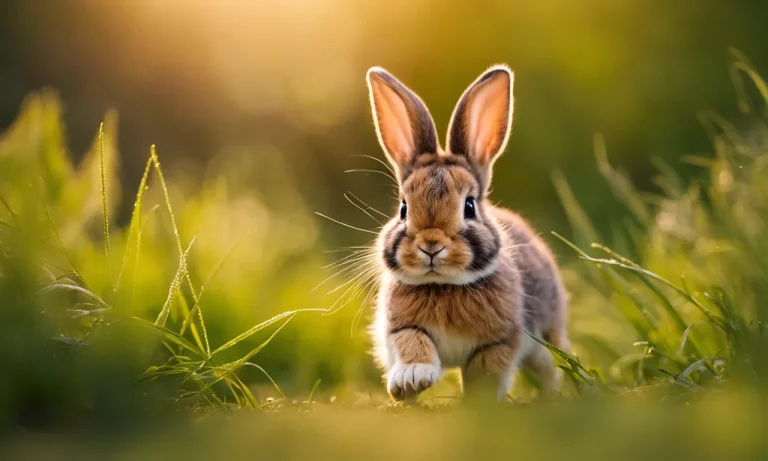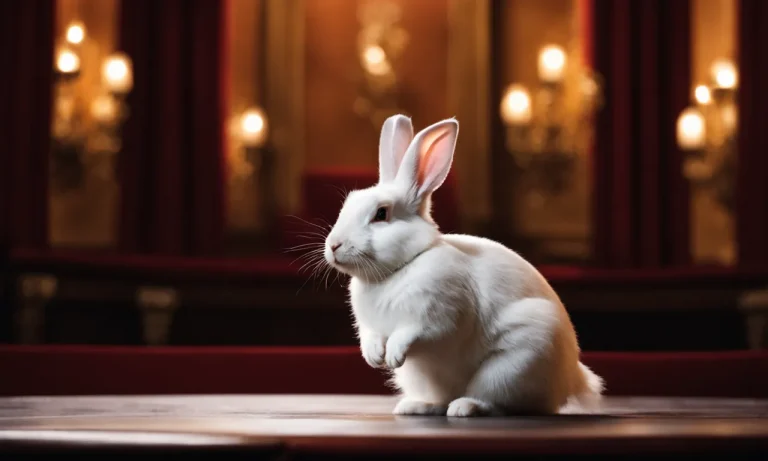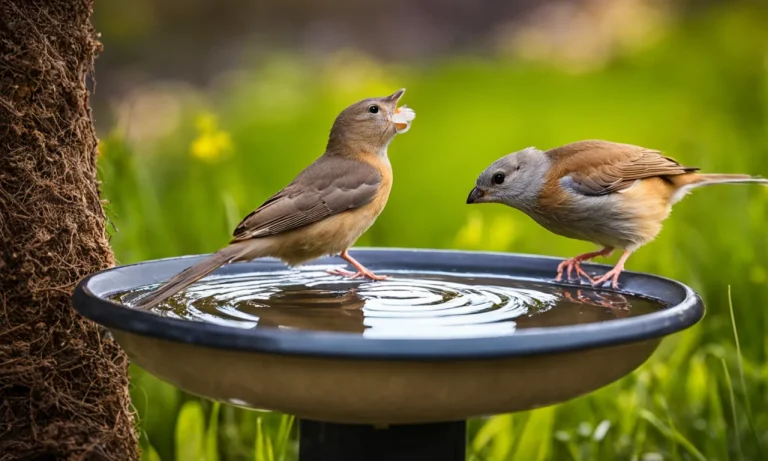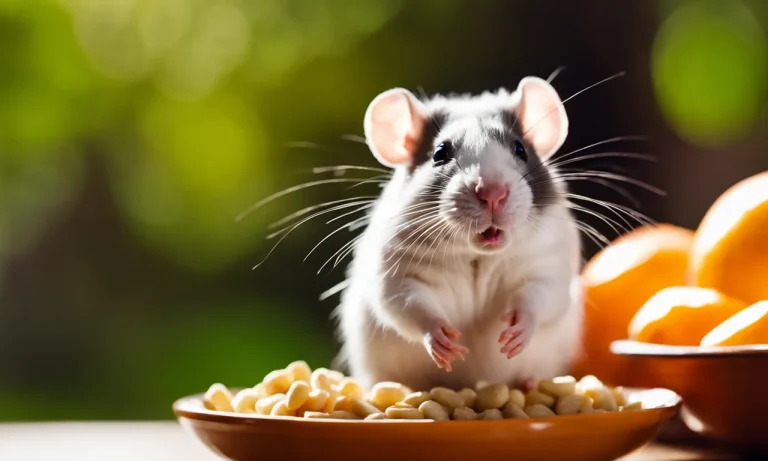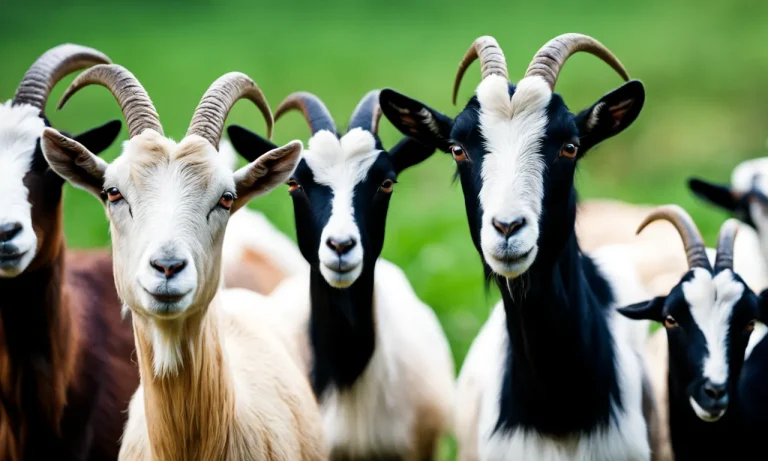If you’ve ever owned female goats or been around farms with goats, you may have wondered, do goats have periods? Understanding the estrous cycle of goats can help goat owners keep their herds healthy and productive.
If you’re short on time, here’s a quick answer to your question: Yes, female goats do have estrous cycles, which are commonly referred to as periods or being ‘in heat’. On average, goats come into heat every 21 days and the estrous cycle lasts around 24 to 48 hours.
In this comprehensive guide, we’ll cover everything you need to know about the reproductive cycle of female goats. We’ll discuss what exactly ‘being in heat’ means, the signs of estrus you can watch for, how long goats are in heat, and how often they come into estrus.
We’ll also provide tips on heat detection, breeding, and health considerations during the estrous cycle.
What Does It Mean When a Goat Is ‘In Heat’?
When a goat is ‘in heat’, it means that she is in the stage of her reproductive cycle where she is sexually receptive and ready to mate. This phase is known as estrus. Understanding the signs and duration of estrus is important for goat owners and breeders to successfully manage breeding programs and ensure reproductive success.
The Estrous Cycle
Goats, like many other mammals, go through a reproductive cycle called the estrous cycle. This cycle consists of several stages, including estrus. The estrous cycle in goats typically lasts about 18 to 22 days, but can vary slightly depending on the individual goat and breed.
During the estrous cycle, a goat will go through periods of sexual receptivity, or heat, as well as periods of non-receptivity. The length of these heat periods can vary, but they generally last around 24 to 48 hours.
Signs of Estrus or ‘Heat’
When a goat is in heat, there are several signs and behaviors that can indicate her receptivity to mating. These signs may include:
- Increased vocalization and bleating
- Restlessness and agitation
- Mounting other goats or objects
- Swollen and reddened vulva
- Changes in appetite and eating habits
It’s important to note that not all goats will display all of these signs, and individual goats may have their own unique behaviors during estrus. Observing the behavior and physical changes of a goat can help determine if she is in heat.
Duration of Estrus
The duration of estrus, or the period of sexual receptivity, can vary among goats. On average, a goat will be in heat for about 24 to 48 hours. However, some goats may have shorter or longer heat periods.
During this time, the goat is most fertile and ready for breeding. If you are planning to breed your goats, it’s important to carefully monitor their heat cycles and be prepared to introduce a male goat, or buck, for mating during this period.
Understanding the signs and duration of estrus in goats is crucial for successful breeding programs. If you are unsure about the reproductive cycle of your goats or have any concerns, it’s always best to consult with a veterinarian or a knowledgeable goat breeder for guidance.
How Often Do Goats Come Into Heat?
Understanding the reproductive cycle of goats is essential for goat farmers and enthusiasts. One important aspect of their reproductive cycle is how often goats come into heat. The heat period, also known as estrus, is the time when a female goat is sexually receptive and can mate with a male goat.
Length of Estrous Cycle
The estrous cycle of goats typically lasts between 18 to 21 days. This means that goats come into heat approximately every three weeks. However, it is important to note that individual goats may vary slightly in their cycle length.
Some goats may have a shorter cycle of around 17 days, while others may have a longer cycle of up to 24 days.
Factors Affecting Cycle Length
Several factors can influence the length of a goat’s estrous cycle. One of the main factors is the breed of the goat. Different breeds may have slightly different cycle lengths. Additionally, the age and health of the goat can also impact the duration of their cycle.
Younger goats may have irregular cycles as they are still maturing.
Nutrition and body condition are also crucial factors. Goats that are undernourished or in poor body condition may experience longer or irregular cycles. It is important to provide goats with a balanced diet and ensure they are in good health to maintain proper reproductive function.
Effect of Seasons
The season can also affect the reproductive cycle of goats. Most goats are seasonal breeders, meaning they have specific breeding seasons during the year. In temperate climates, goats tend to have a higher likelihood of coming into heat during the fall and winter months.
This is because the decreasing daylight hours and cooler temperatures signal the goats’ bodies that it is time to breed.
However, it is important to note that not all goats follow a strict breeding season. Some goats, particularly those in tropical climates or with certain genetics, may exhibit year-round breeding behavior.
Understanding how often goats come into heat is important for goat farmers who are planning their breeding programs. By keeping track of their goats’ estrous cycles and considering the factors that can influence cycle length, farmers can maximize their chances of successful breeding and reproduction.
How to Detect When Your Goat is in Estrus
As a goat owner, it is important to be able to detect when your goat is in estrus, or heat. This is crucial for successful breeding and reproduction. Here are some methods to help you determine if your goat is in estrus:
Behavioral Signs to Watch For
Goats in estrus will often display certain behavioral signs that indicate they are ready to breed. These signs can vary from goat to goat, but some common indicators include:
- Restlessness and increased vocalization
- Mounting other goats or objects
- Swelling and reddening of the vulva
- Increased urination
- Changes in appetite and milk production
By closely observing your goat’s behavior, you can identify these signs and determine if she is in estrus.
Using Marking Harnesses
Marking harnesses can be a useful tool in detecting when your goat is in heat. These harnesses are equipped with a crayon or chalk that leaves a mark on the goat’s flanks or rump when she is mounted by a buck.
This makes it easy to see if your goat has been bred and helps you track her breeding cycle.
To use a marking harness, simply attach it to a buck and allow him to breed with your doe. The crayon or chalk will transfer onto the doe, indicating that she has been bred. Check the harness regularly to see if any marks have been made, which can help you determine if your goat is in estrus.
Other Heat Detection Methods
In addition to behavioral signs and marking harnesses, there are other methods you can use to detect when your goat is in estrus. These include:
- Observing the goat’s discharge: A goat in estrus may have a clear or slightly cloudy discharge from her vulva.
- Checking the goat’s temperature: A slight increase in body temperature can indicate that the goat is in heat.
- Using electronic heat detectors: These devices can detect changes in a goat’s vaginal temperature, which can indicate that she is in estrus.
It’s important to note that these methods may not be foolproof, and it’s always best to use a combination of different detection methods to ensure accuracy.
Remember, understanding when your goat is in estrus is crucial for successful breeding. By paying attention to behavioral signs, using marking harnesses, and utilizing other detection methods, you can increase your chances of successful breeding and reproduction.
Breeding Considerations for Goats in Heat
When to Breed
Knowing the right time to breed your goats is crucial for a successful breeding program. Female goats, known as does, go into heat every 18 to 21 days, with the average heat cycle lasting about 24 to 48 hours.
It is important to carefully observe their behavior and physical signs to determine when they are in heat. Some common indicators include restlessness, frequent urination, swollen vulva, and a strong odor. Additionally, does may vocalize more and exhibit increased interest in the bucks.
When it comes to breeding, it is generally recommended to wait until the doe has had at least two heat cycles before attempting to breed her. This allows her body to fully mature and reduces the risk of complications during pregnancy and delivery.
Signs She Has Been Bred
After successful breeding, it may be challenging to determine if a doe has been successfully impregnated. However, there are some signs that can indicate a successful breeding. One of the most reliable signs is the absence of heat cycles.
If the doe does not come into heat again within the expected time frame, it is a good indication that she is pregnant. Additionally, some physical changes may occur, such as an increase in appetite, weight gain, and the development of a firm udder.
It is important to note that these signs may vary among individual does, so it is always best to consult with a veterinarian for confirmation.
Caring for the Pregnant Doe
Once a doe has been confirmed pregnant, it is important to provide her with the appropriate care to ensure a healthy pregnancy and successful delivery. Proper nutrition is crucial during this time, as the developing kids require adequate nutrients for their growth.
High-quality hay, grains, and minerals should be included in the doe’s diet. Regular veterinary check-ups are also recommended to monitor the doe’s health and address any potential issues.
As the pregnancy progresses, it is important to provide the doe with a clean and comfortable environment. This includes a well-ventilated shelter with proper bedding and enough space for the doe to move around comfortably. Regular exercise is also beneficial for her overall well-being.
It is essential to be prepared for the upcoming birth by setting up a clean and secure kidding area. This area should be free of drafts and predators, with clean bedding and proper lighting. Additionally, having a birthing kit ready with essential supplies such as clean towels, iodine solution, and gloves is recommended.
Health and Care During the Estrous Cycle
Providing Proper Nutrition
During the estrous cycle, it is crucial to provide goats with proper nutrition to support their reproductive health. This includes a balanced diet that includes a variety of forages, grains, and minerals.
It is important to ensure that the diet is high in fiber and low in carbohydrates to maintain optimal gut health. Additionally, goats should have access to fresh water at all times. Providing a well-rounded diet will help to support the goats’ overall health and may help to alleviate any potential complications during their estrous cycle.
Potential Complications
While goats do not have periods like humans do, they do experience hormonal changes during their estrous cycle. During this time, they may exhibit signs of heat, such as restlessness, increased vocalization, and mounting other goats.
However, it is important to monitor your goats closely during this period for any potential complications. Some goats may experience irregular cycles, hormonal imbalances, or reproductive issues. If you notice any abnormal behavior or physical symptoms, it is best to consult a veterinarian for further evaluation and guidance.
When to Contact a Vet
If you are unsure about the health or behavior of your goat during its estrous cycle, it is always best to contact a veterinarian. They can provide expert advice and guidance based on their experience and knowledge.
Some signs that may warrant a call to the vet include prolonged or irregular estrous cycles, excessive bleeding, signs of pain or discomfort, or any other symptoms that are concerning or out of the ordinary.
Remember, it is always better to be safe than sorry when it comes to the health and well-being of your goats.
Conclusion
In summary, female goats do experience regular estrous cycles, commonly referred to as ‘being in heat.’ On average, cycles recur every 21 days and last 24-48 hours. Signs like restlessness, discharge, and flagging of the tail can indicate your doe is in estrus.
Keeping track of the heat cycle through methods like marking harnesses allows you to breed your does during their optimal fertility window. Providing proper care and nutrition supports reproductive health.
Now that you understand the heat cycle of goats, you can better manage your herd for productivity and health.
We hope this guide gave you a comprehensive overview explaining do goats have periods. Understanding the estrous cycle is an important part of goat ownership and management. Let us know if you have any other goat care questions!

